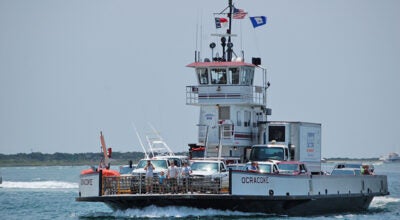Highway marker sought to commemorate Hyde school boycott
Published 6:44 am Thursday, August 16, 2018

- Protestors march through Swan Quarter, Hyde County, on Feb. 14, 1969, to save traditionally black public schools. Courtesy North Carolina Museum of History
Fifty years ago in Hyde County, residents launched a school boycott, known locally as “The Movement.” It became not only a pivotal point in eastern North Carolina history, but one of the most sustained and successful civil rights protests in America.
Davis High Ventures, a Hyde County nonprofit, wants to erect a North Carolina Historic Highway marker in the county to commemorate the 1968-69 boycott. A public meeting on the matter will be held Thursday, Aug. 16, at 6 p.m., at the Davis Youth and Recreation Center, 33478 US 264, Engelhard.
Following the 1954 landmark decision in Brown v. Board of Education by the US Supreme Court and the Civil Rights Act of 1964, the Hyde County Board of Education developed a desegregation plan. Ultimately, a “freedom of choice” plan called for the closing of two black schools – Davis School in Engelhard and O. A. Peay School in Swan Quarter. The closings were met with much trepidation in the black community, who had been left out of the planning process. Subsequent negotiations failed and when the 1968-69 school year began many black students boycotted.
As months went by with no resolution to the issue, plans were formulated for two marches to the state capitol of Raleigh. On a cold and wet February day in 1969, over 125 demonstrators left Jobe’s Chapel Baptist Church in Swan Quarter and headed west on US 264. The “March on Raleigh”, a trip of 200 miles, took six days. The marchers, mostly teens, were followed by chaperones in automobiles with trailers and buses carrying food and bedding. Spending nights in black churches in small towns along the way, they were join by local demonstrators who walked through their towns alongside the Hyde contingent.
Many more months went by before two new plans were put forward by the school board. The first plan would mean that the two black schools would be shut down with all students being transferred to Mattamuskeet School, a centrally located school that would need to be expanded to accommodate all students. A $500,000.00 bond issue to pay for the expansion would need to be passed during local elections in November 1969.
The second plan would utilize all three schools by converting the two black schools into elementary schools and Mattamuskeet into a high school. This required no new construction and only modest renovations. Other advantages to the second plan included shorter bus routes and the separation of elementary and high school students. If the first plan failed at the polls, the second plan would automatically be enacted.
The bond referendum was defeated by a four-to-one margin and slowly the tide of inequities turned as the people of Hyde County learned to work together as one. The two black schools remained open.
“Hyde County citizens will continue to work together,” said Michael Adams, CEO, of Davis High Ventures. “We hope they will attend the public meeting to share their thoughts and comments regarding the proposed historic marker.”
The North Carolina Historic Marker Program was established in 1935 in an effort to standardize the practice of marking sites of statewide historical significance. Working together, NC Department of Cultural Resources and the Department of Transportation, oversee the program which has at least one marker in every county. Their website is www.ncmarkers.com.





